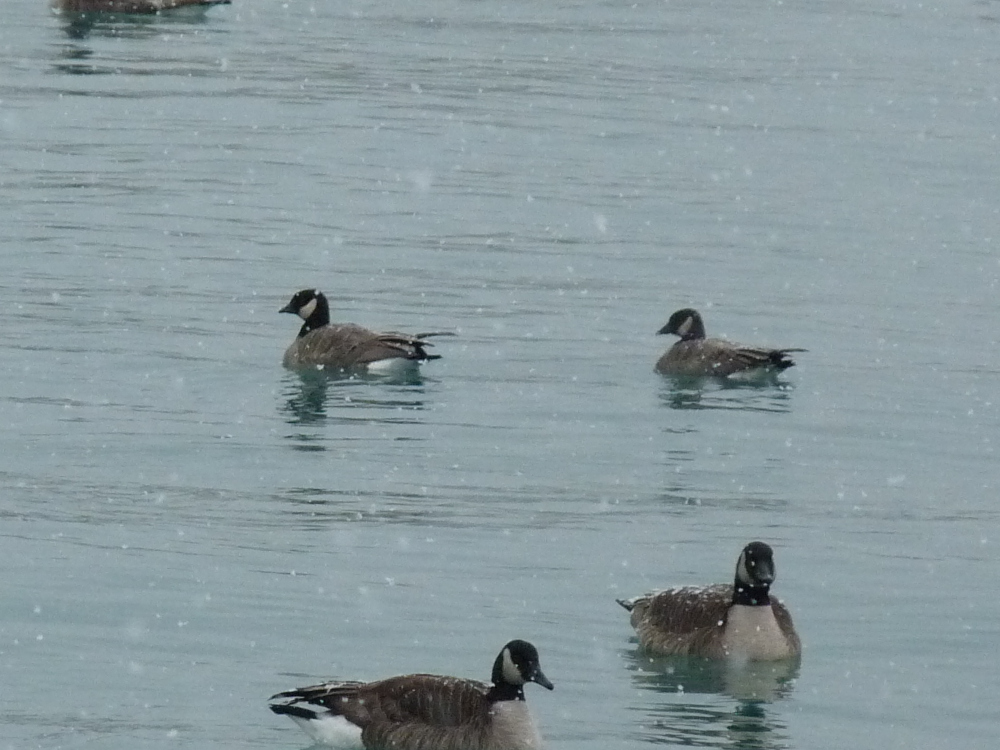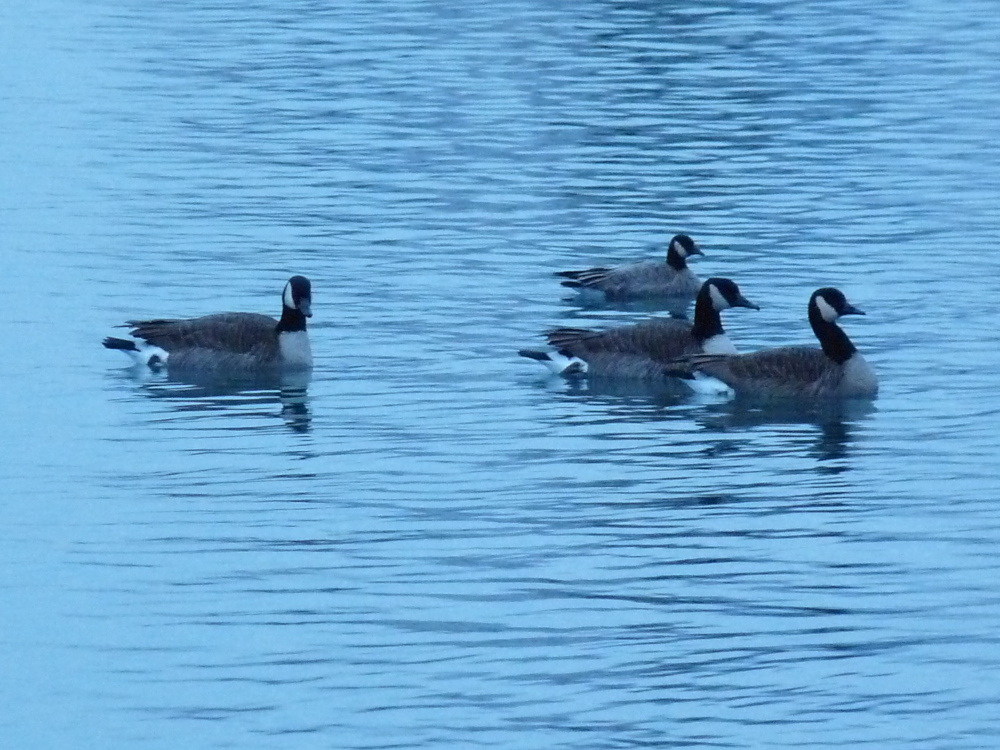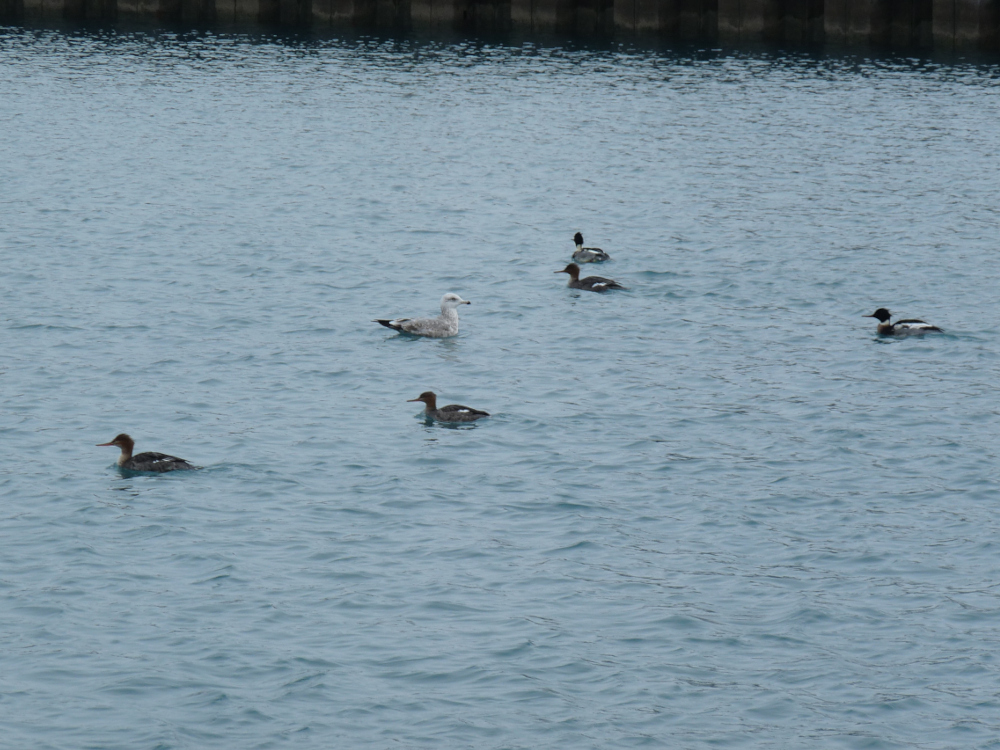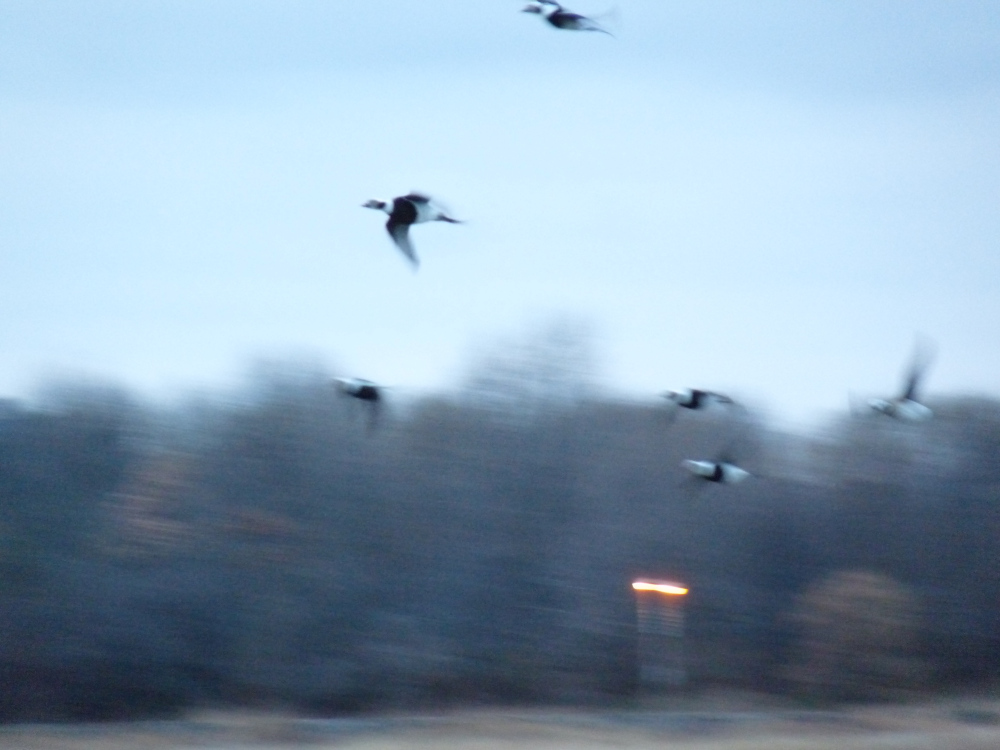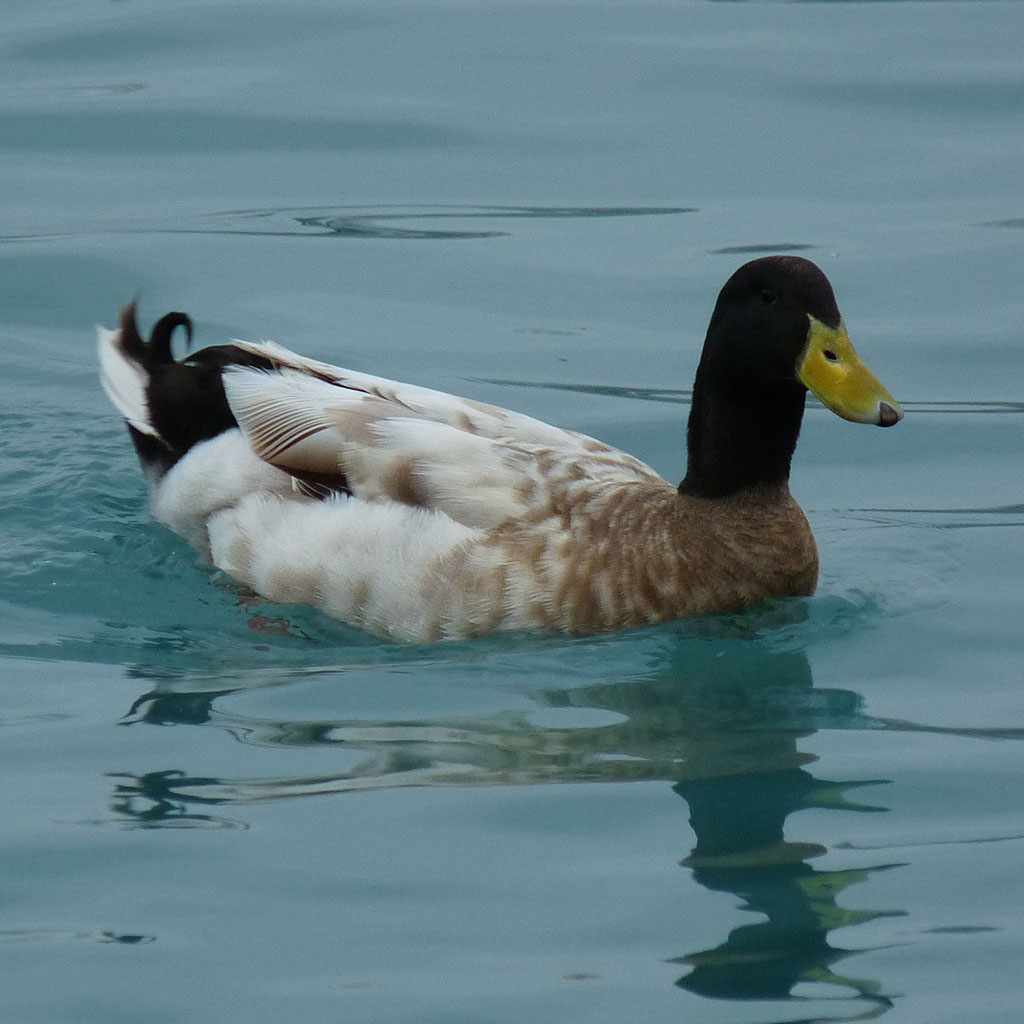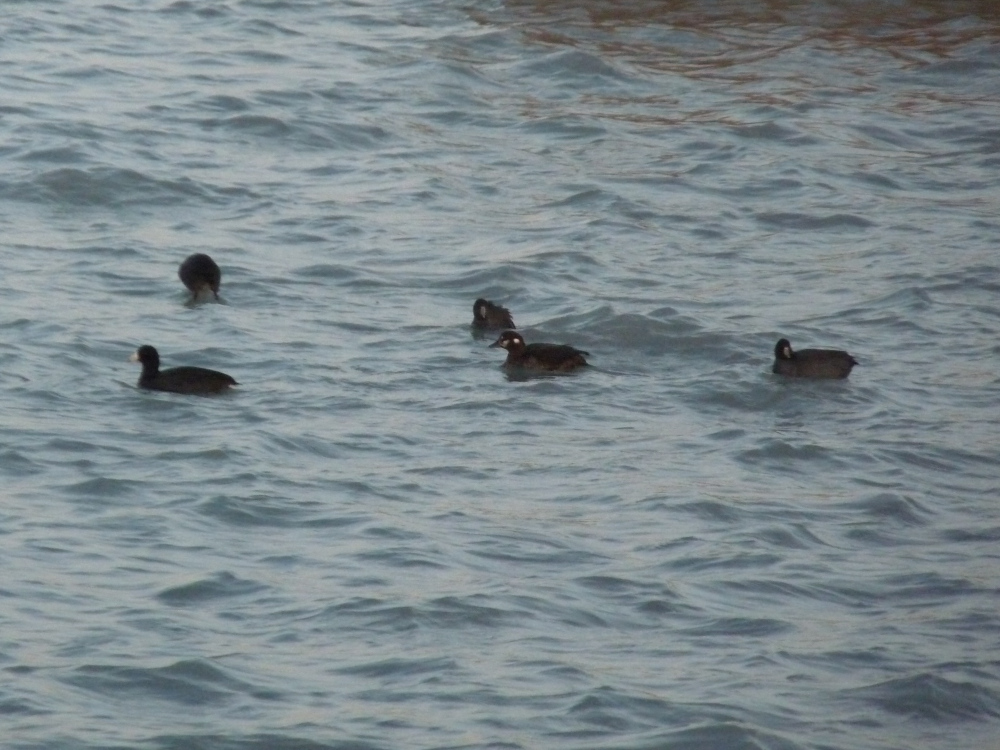Late January is the slowest time of the year for birding at Montrose. Fall migration is over and spring migration won’t start for two or three weeks at the earliest. If you see 20 species in a day in the middle of winter you’re doing well. January 2023 hasn’t been any different than previous Januarys, except perhaps for the milder weather, but we have had a few interesting sightings. Two Cackling Geese are hanging out with the large wintering Canada Goose flock. Look for them wherever the Canadas are, like the harbor or at the north end of the Marovitz Golf Course. The smaller, shorter necked, and stubbier billed Cacklers really stand out among their larger cousins.
Red-throated Loons are regular in winter in small numbers along the Illinois Lake Michigan lakefront. On January 22 one was resting on the lake a few hundred yards offshore from the end of the fishing pier. Red-throated Loon is the default winter loon on Lake Michigan. Your best bet for seeing them at Montrose is from the fishing pier.
Photos of the Cackling Geese and Red-throated Loon are at my eBird checklist for the morning, URL below.
eBird Checklist
January 23, 2023

